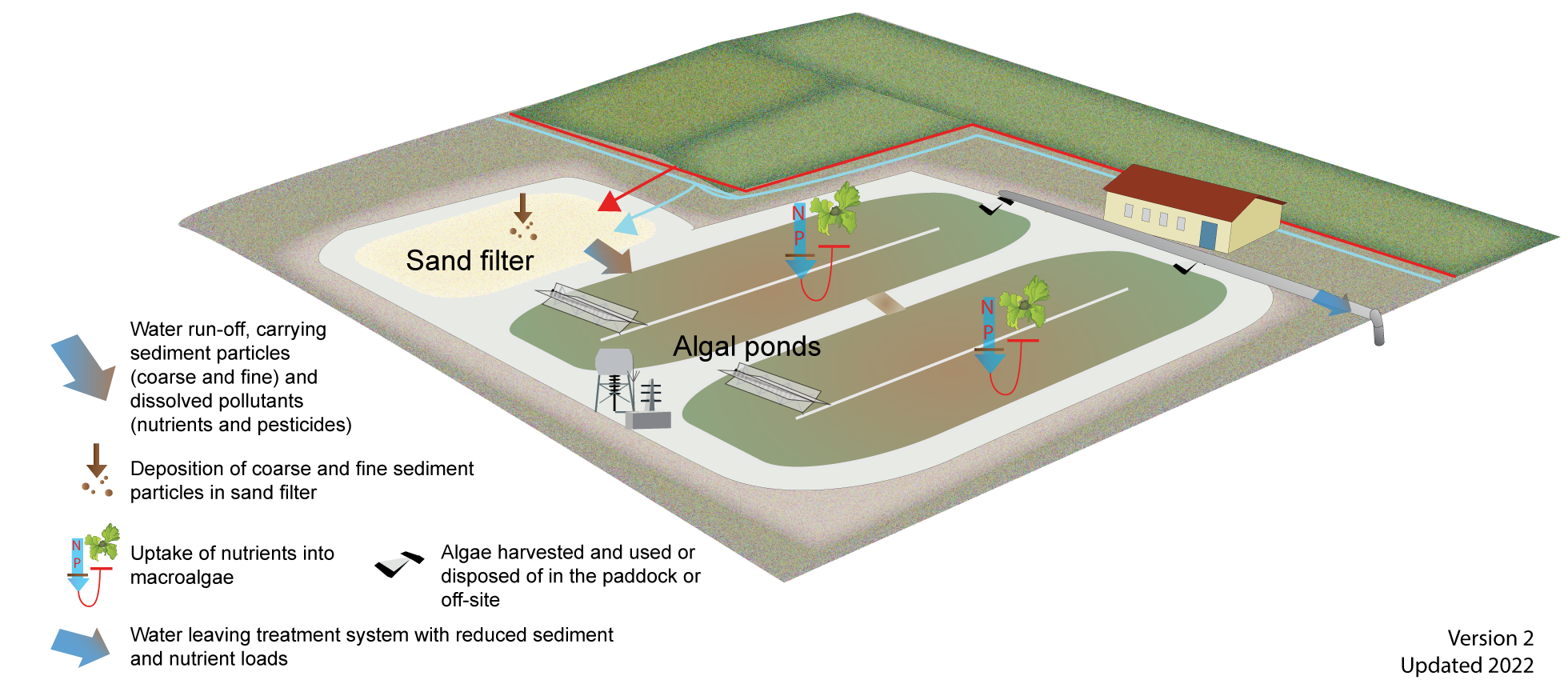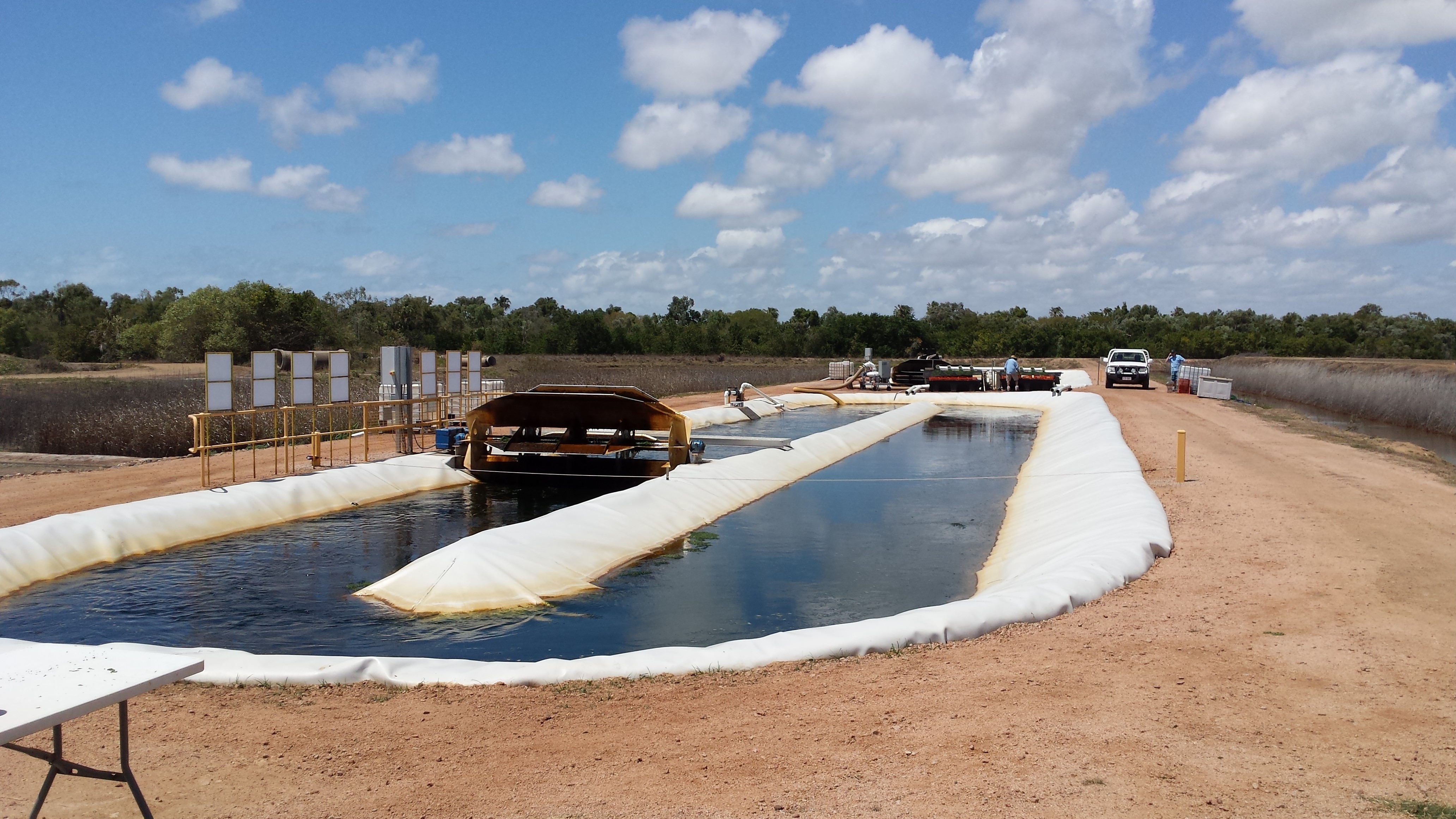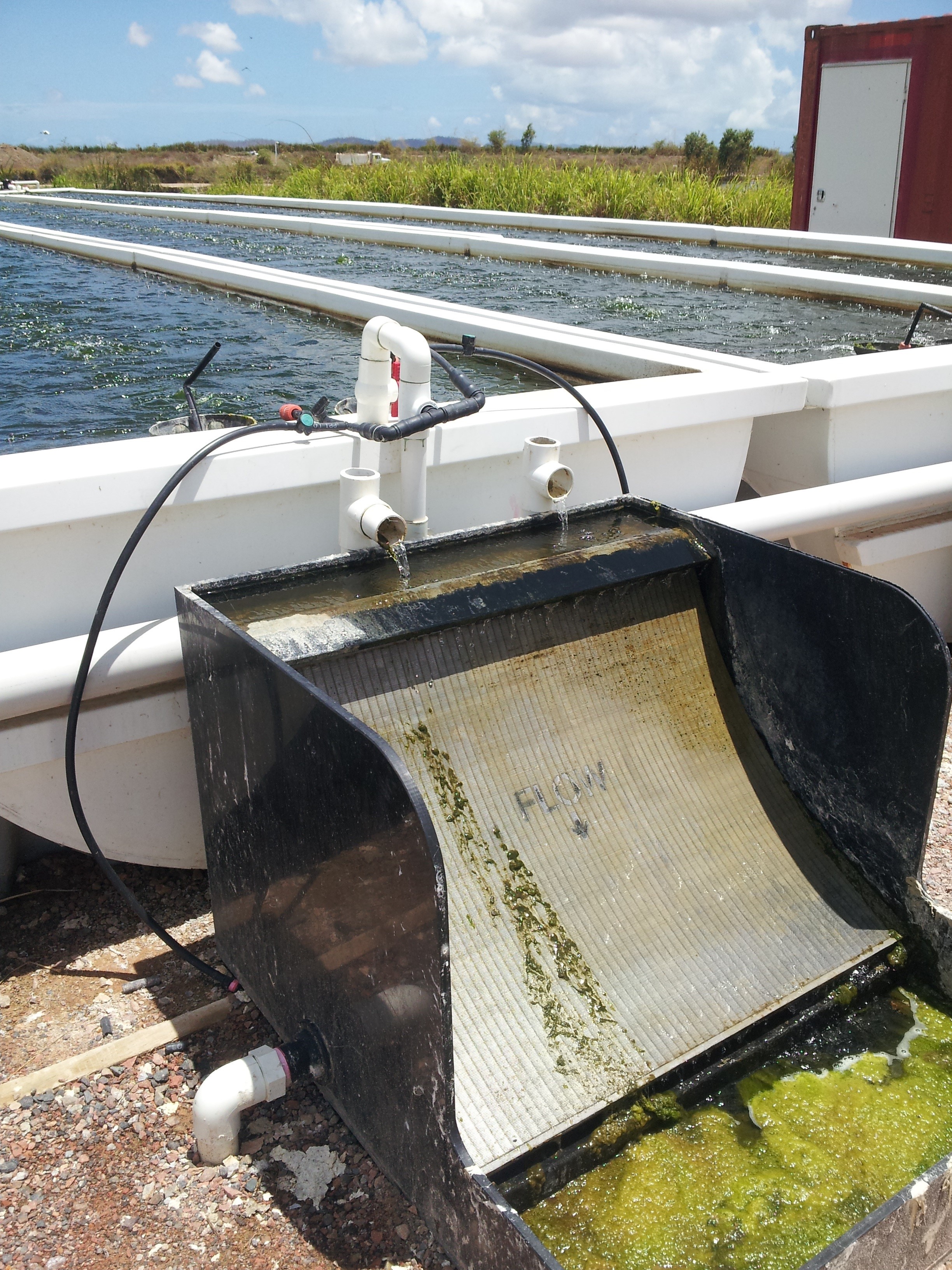|
|
Algae treatmentAlgae treatmentSelect from the tabs below Other name/sAlgae ponds, High Rate Algal Ponds (HRAPs), Bioremediation using macroalgae Description:The cultivation and subsequent harvest of freshwater or saline/marine macroalgae (seaweed) provides a way to sequester and remove nutrients (nitrogen and phosphorous) and other elements as a component of the biomass of macroalgae[5][2]. Macroalgae is usually cultivated in a mechanical treatment system, called a high-rate algal pond. These are shallow, raceway ponds that circulate wastewater via a paddle wheel (or similar) to continuously mix the water to maximise algal growth and hence nutrient removal. The algal biomass takes up or absorbs nutrients from water as it grows and multiplies. Algal biomass is regularly harvested and can be used for various bio-products of value, such as energy, oils, fertiliser, soil amendment and stock feed. The bioremediation system is robust, deals with high and very low nutrient regimes including variable loads and has been tested in various freshwater waste streams. It has been used to treat both nutrients and pathogens in sewage treatment plants[4]. A strength is the ability to quantify the nutrients removed and to deliver end-use value of these nutrients and the biomass offsetting the cost of treatment[1][2][7][6]. HRAP have been used to treat aquaculture wastewater from prawn farms and fish farms in north Queensland. Its use in agriculture systems like cane and horticulture has not been demonstrated, although investigation of cane farm run-off suggests they could be suitable[3]. The actual cost-effectiveness of an algae treatment system will depend on the specific site conditions and project objectives and needs to be considered relative to other treatment systems or management intervention options. Refer to cost considerations for more information. Services and benefits:
DisclaimerIn addition to the standard disclaimer located at the bottom of the page, please note the content presented is based on published knowledge of treatment systems. Many of the treatment systems described have not been trialled in different regions or land uses in Queensland. The information will be updated as new trials are conducted and monitored. If you have any additional information on treatment systems or suggestions for additional technologies please contact us using the feedback link at the bottom of this page. References
Last updated: 27 June 2022 This page should be cited as: Department of Environment, Science and Innovation, Queensland (2022) Algae treatment, WetlandInfo website, accessed 18 March 2024. Available at: https://wetlandinfo.des.qld.gov.au/wetlands/management/treatment-systems/for-agriculture/treatment-sys-nav-page/algae-treatment/ |

 — Department of Environment, Science and Innovation
— Department of Environment, Science and Innovation




